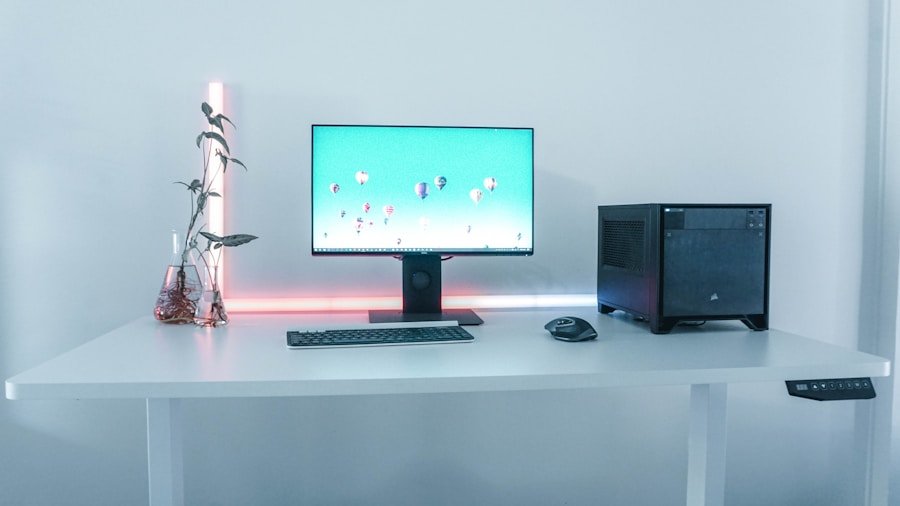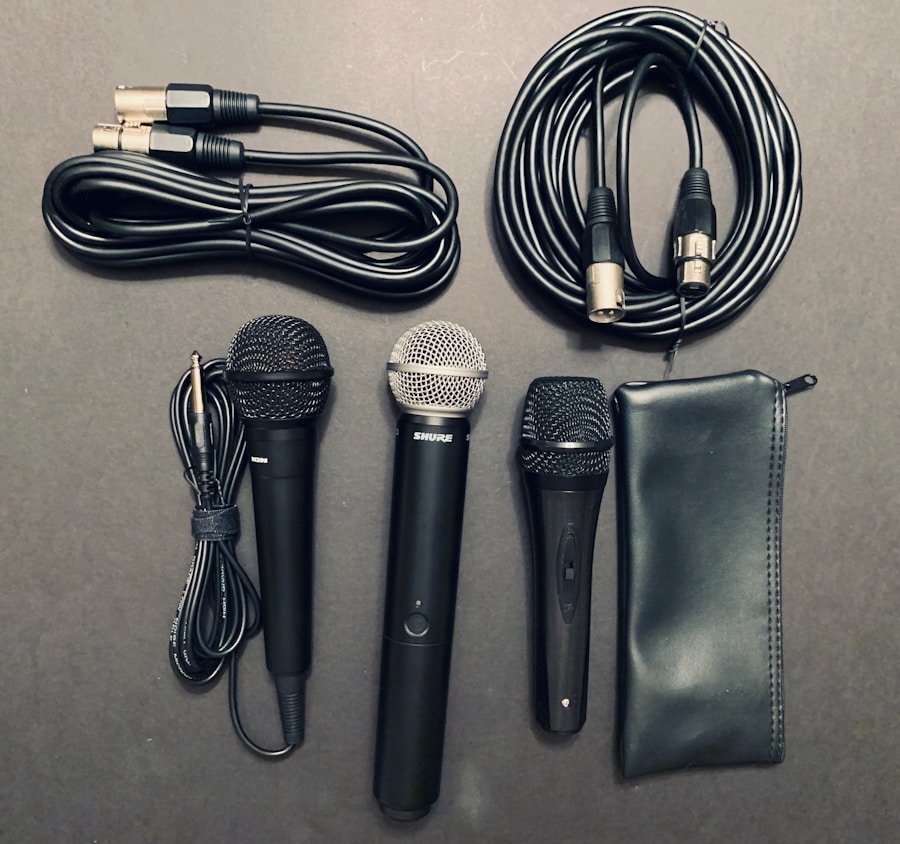Now Reading: Future-Proof Your Gaming Experience: Build a Gaming PC for 2025
-
01
Future-Proof Your Gaming Experience: Build a Gaming PC for 2025
Future-Proof Your Gaming Experience: Build a Gaming PC for 2025

As a passionate gamer, I often find myself contemplating the future of my gaming experience.
With the gaming landscape constantly shifting, I’ve realized the importance of future-proofing my setup to ensure that I can enjoy the latest titles without constantly needing to upgrade.
Future-proofing isn’t just about having the most powerful hardware; it’s about making informed decisions that will keep my gaming experience relevant for years to come. In this article, I will explore various aspects of future-proofing my gaming experience, from understanding hardware requirements to selecting the right components and optimizing my setup for advanced graphics and virtual reality. By taking a proactive approach, I can create a gaming environment that not only meets today’s demands but also anticipates the needs of tomorrow’s games.
Whether I’m a casual player or a competitive gamer, future-proofing my gaming rig is essential for maximizing enjoyment and performance.
Key Takeaways
- Future-proofing your gaming experience is essential to stay ahead of the curve and enjoy the latest gaming technologies.
- Understanding the hardware requirements for 2025 gaming is crucial for building a gaming PC that can handle upcoming games and advancements.
- Choosing the right components for your gaming PC involves considering factors such as CPU, GPU, RAM, and storage to ensure optimal performance.
- Future-proofing your gaming PC with upgradability in mind allows for easy and cost-effective upgrades as new technologies emerge.
- Optimizing your gaming PC for advanced graphics and VR gaming involves fine-tuning settings and potentially upgrading components for a seamless experience.
Understanding the Hardware Requirements for 2025 Gaming
Graphics Card: The Backbone of Visual Performance
One of the most significant factors to consider is the graphics card. As games become more visually demanding, I know that a powerful GPU will be essential for rendering high-resolution textures and complex environments. By 2025, I expect to see advancements in ray tracing technology and AI-driven graphics enhancements, which will require a GPU capable of handling these innovations.
CPU Requirements: Managing Complexity and AI
Additionally, I must pay attention to the CPU requirements, as modern games increasingly rely on multi-core processors to manage complex calculations and AI behaviors. Understanding these requirements will help me make informed decisions when selecting components for my gaming PC.
Staying Ahead of the Curve
By staying informed about the evolving hardware requirements, I can ensure that my gaming setup remains capable of handling the demands of upcoming titles, providing me with a seamless and immersive gaming experience.
Choosing the Right Components for Your Gaming PC

When it comes to building a gaming PC that can withstand the test of time, choosing the right components is paramount. I’ve learned that each part plays a vital role in overall performance, and selecting high-quality components can make all the difference in my gaming experience. Starting with the motherboard, I need to ensure it supports the latest technologies and has room for future upgrades.
A motherboard with PCIe 4.0 or even PCIe 5.0 support will allow me to take advantage of faster GPUs and storage solutions as they become available. Next on my list is RAM. As games become more demanding, having sufficient memory is crucial for smooth gameplay.
I’ve found that opting for at least 16GB of RAM is a good baseline for 2025 gaming, but considering 32GB may provide even more longevity as game requirements increase. Additionally, I must not overlook storage options; an NVMe SSD will significantly improve load times and overall system responsiveness compared to traditional hard drives. By carefully selecting these components, I can build a solid foundation for my gaming PC that will serve me well into the future.
Future-Proofing Your Gaming PC with Upgradability in Mind
One of the key strategies for future-proofing my gaming PC is to prioritize upgradability. As technology advances, I want to ensure that I can easily replace or upgrade individual components without having to invest in an entirely new system. This approach not only saves me money in the long run but also allows me to keep pace with the latest developments in gaming technology.
To achieve this, I’ve learned to choose a case that offers ample space for additional components and good airflow for cooling. A modular power supply is another excellent investment, as it allows me to add more power as needed without replacing the entire unit. Furthermore, selecting a motherboard with multiple expansion slots ensures that I can upgrade my GPU or add additional RAM in the future without any hassle.
By keeping upgradability in mind during the initial build process, I can create a gaming rig that adapts to changing technology and continues to deliver an exceptional experience.
Optimizing Your Gaming PC for Advanced Graphics and VR Gaming
As I delve deeper into future-proofing my gaming experience, optimizing my PC for advanced graphics and virtual reality becomes increasingly important. With VR technology gaining traction and games becoming more graphically intensive, I want to ensure that my setup can handle these demands seamlessly. One of the first steps I’ve taken is to invest in a high-refresh-rate monitor that supports G-Sync or FreeSync technology.
This not only enhances my visual experience but also reduces screen tearing and input lag during intense gaming sessions. In addition to my monitor choice, I’ve focused on fine-tuning my graphics settings within games. By balancing visual fidelity with performance, I can achieve smooth gameplay without sacrificing too much detail.
Utilizing tools like NVIDIA’s GeForce Experience allows me to optimize game settings automatically based on my hardware capabilities. Furthermore, keeping my drivers up-to-date ensures that I’m taking full advantage of performance improvements and new features released by manufacturers. By prioritizing these optimizations, I can immerse myself in stunning graphics and VR experiences without compromising on performance.
Building a Gaming PC for 2025: Step-by-Step Guide

Preparing for Assembly
To start, I gather all necessary components: CPU, GPU, RAM, motherboard, storage drives, power supply, and cooling solutions. Once everything is ready, I begin by preparing my workspace and ensuring that I have all the tools needed for assembly.
Assembling the PC
The first step in the assembly process involves installing the CPU onto the motherboard carefully. After securing it in place, I add thermal paste before attaching the CPU cooler. Next, I insert the RAM sticks into their designated slots, ensuring they are seated correctly. With these components in place, I move on to installing the motherboard into the case while connecting all necessary cables from the power supply. Once everything is connected and secured, I install the GPU and any additional storage drives before closing up the case.
Installing the Operating System and Customizing Settings
After assembling my gaming PC, it’s time to install the operating system and drivers. This step is crucial for ensuring optimal performance and compatibility with games. Once everything is set up and running smoothly, I take some time to customize my settings and install essential software before diving into my first gaming session on this newly built rig.
Maintaining and Upgrading Your Gaming PC for Longevity
To truly enjoy a future-proof gaming experience, regular maintenance and timely upgrades are essential. Over time, dust accumulation can hinder performance by obstructing airflow and causing overheating issues. To combat this, I make it a habit to clean my PC every few months by using compressed air to blow out dust from fans and components.
Upgrading components as needed is another critical aspect of maintaining my gaming PC’s longevity. As new games are released with higher system requirements, I keep an eye on performance metrics during gameplay.
If I notice any lag or stuttering during demanding titles, it may be time to consider upgrading my GPU or adding more RAM. Staying informed about advancements in technology allows me to make educated decisions about when and what to upgrade.
Enjoying a Future-Proof Gaming Experience
In conclusion, future-proofing my gaming experience requires careful planning and consideration of various factors ranging from hardware requirements to component selection and maintenance practices. By understanding what lies ahead in terms of technology advancements and game demands, I can build a gaming PC that not only meets today’s standards but also adapts to future challenges. Through thoughtful choices regarding upgradability and optimization techniques, I can ensure that my gaming rig remains relevant for years to come.
Ultimately, investing time and effort into future-proofing my setup allows me to fully immerse myself in the ever-evolving world of gaming while enjoying an unparalleled experience with each new title released. As I continue on this journey, I look forward to exploring new horizons in gaming technology while relishing every moment spent in virtual worlds.
If you’re interested in building a gaming PC for 2025, you may also want to check out this article on this page. Whether you’re looking to build a new gaming rig or just want to stay up to date on the latest gaming and cosplay trends, Gamers.co has you covered.
FAQs
What are the key components needed to build a gaming PC in 2025?
In 2025, the key components needed to build a gaming PC include a powerful CPU, a high-performance GPU, sufficient RAM, a fast and reliable SSD, a high-quality motherboard, a reliable power supply unit, and a well-ventilated PC case.
What are the recommended specifications for a gaming PC in 2025?
The recommended specifications for a gaming PC in 2025 include an Intel Core i7 or AMD Ryzen 7 processor, an NVIDIA GeForce RTX 30 series or AMD Radeon RX 6000 series graphics card, 16GB to 32GB of DDR4 or DDR5 RAM, a 1TB NVMe SSD, a high-quality motherboard with PCIe 4.0 support, a 750W to 850W power supply unit, and a well-ventilated PC case with good airflow.
What advancements in technology can be expected for gaming PCs in 2025?
Advancements in technology for gaming PCs in 2025 may include faster and more efficient processors, more powerful and energy-efficient graphics cards, higher capacity and faster RAM, larger and faster storage options, improved connectivity options such as Wi-Fi 6E and USB 4.0, and enhanced cooling solutions for better thermal management.
How much does it cost to build a gaming PC in 2025?
The cost of building a gaming PC in 2025 can vary depending on the specific components and their brands, but a high-performance gaming PC with the recommended specifications can cost anywhere from $1500 to $3000 or more.
What are some important considerations when building a gaming PC in 2025?
Some important considerations when building a gaming PC in 2025 include choosing components that are compatible with each other, considering future upgradability, ensuring sufficient cooling for the components, selecting a reliable power supply unit, and optimizing the build for the best gaming performance within the budget.

























